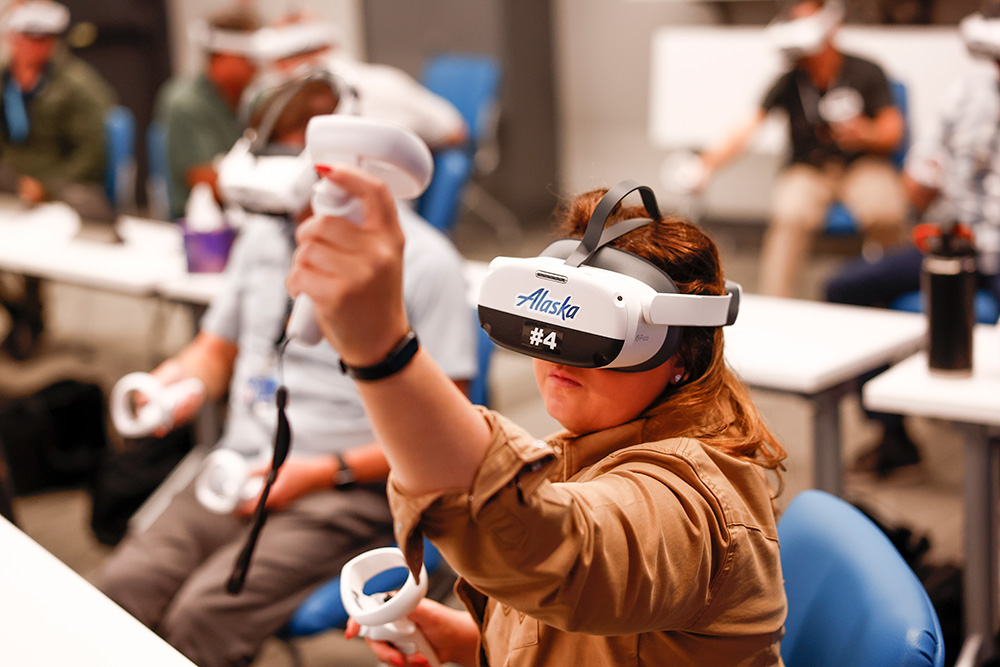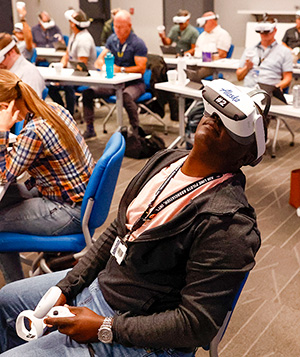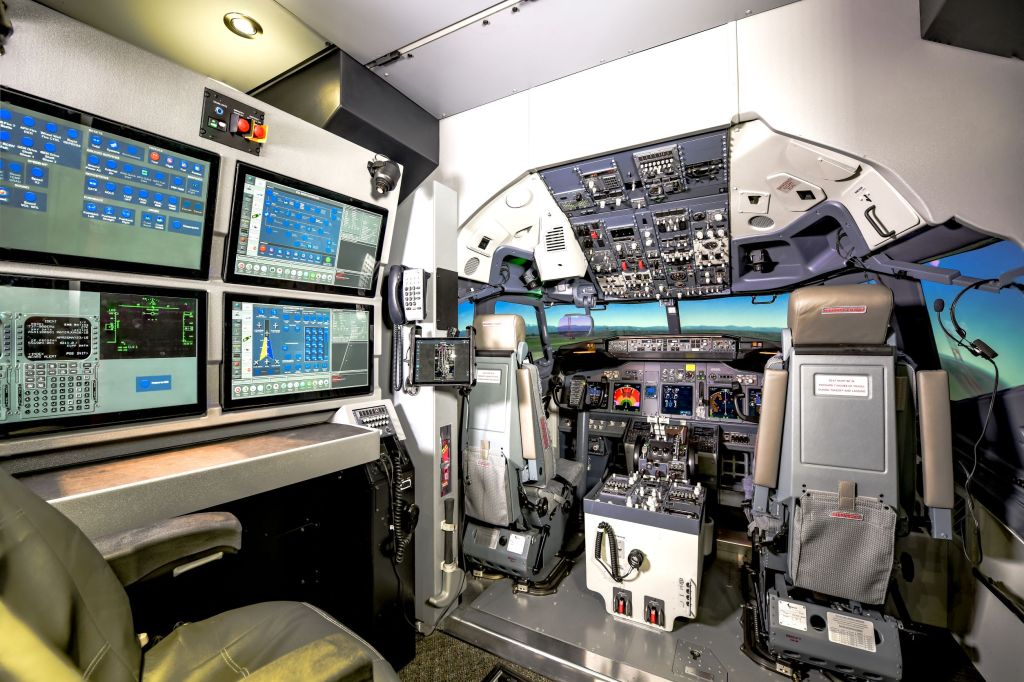Alaska is investing in pilot technology to attract and retain world-class pilots
Share

One day, our pilots are flying into remote communities above the Arctic Circle. The next, they’re flying into some of the busiest airports in the country. Our pilots must be able to handle any issue that might arise in flight – from blizzard conditions to congested air space – and we rely on rigorous pilot training standards to safely fly our guests across our network.
As we’re hiring hundreds of new pilots at Alaska Airlines and Horizon Air, we’re ensuring everyone is up for the task and meets our high standards. To help with this, we’ve invested in new technology to expand our training department.
Training in virtual reality

Alaska has been at the forefront of pilot innovation for decades. It’s who we are, and we’re constantly innovating to ensure our pilots receive cutting edge training.
Our latest innovation is a partnership with VRPilot, a Danish technology company. We’ve worked with them to virtually reconstruct our 737 flight deck as a training aid for pilots who are new to the aircraft. One of the first things pilots learn is the layout of the flight deck and the purpose of every switch and button. Offering new pilots an opportunity to put themselves “inside” the flight deck where they may need to crane their neck or lean to reach a switch is a much more realistic teaching tool than photographs in a book or video tutorials.
It’s like your alarm clock in the morning – you know exactly where the snooze button is,” said Alaska First Officer Scott Wathey, a newly hired pilot. “This technology helps the muscle memory to know exactly where that switch is.”
Virtual reality will augment existing traditional training techniques where we expect it will result in better-prepared pilots, higher success rates through training and more time for complex instructor-led training activities. With this technology, pilots can familiarize themselves with the location of switches before they step into a simulator.
Horizon Air, Alaska’s wholly owned regional partner, will also soon be using the same technology with our regional pilots. This technology also provides an opportunity to use virtual reality in our other workgroups like maintenance and engineering, ground service and our flight attendants.
Largest simulator order to date
With so many pilots coming through training, we needed more flight simulators. In our largest simulator order ever, we’ve ordered 2 new fixed-base simulators and 3 new full motion simulators. These training devices are being installed throughout 2023 and all will be operational by the end of 2024. This will bring us to 18 fixed-base and full motion simulators. Horizon Air has ordered an additional simulator to train pilots on the now single fleet of Embraer E-175 aircraft. This will give Horizon two owned simulators and priority access to a third in Seattle.

These significant investments in simulators and emerging virtual reality technology will continue our commitment to rigorous pilot training,” said Capt. Jeff Severns, managing director of pilot training. “The training our pilots receive is truly world class, and we’re proud of the work of our instructors and students every day.”
A great time to fly for Alaska Airlines and Horizon Air
With significant investments Alaska and Horizon pilot contracts, unique flying opportunities and cutting-edge technology, there’s never been a better time to on our team.
If you haven’t yet started your pilot journey, consider applying for one of our pilot development programs.



